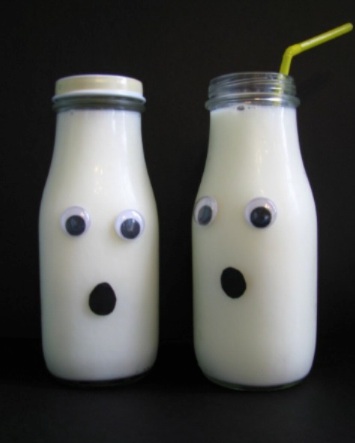Everything You Didn't Know About Calcium

Fast-forward 18 years of skimping on calcium, and you’d think that my bones would have melded together into an angry mess. But that has not happened—in fact, I have never broken a bone, and I haven’t run into any problems when exercising… so what’s the deal with calcium? Is it marketing hype?
Not at all. Calcium is one of the most abundant minerals in the body, and one of the most important minerals in the body. Aside from its more obvious functions—formation of teeth and bones—calcium also helps with blood clotting, muscle contraction and nerve function. Severe deficiencies do cause health issues to arise; but, in the case of a short-term deficiency, the body takes calcium that is stored in the bones and uses it to maintain calcium levels in blood. That’s why people like me don’t turn into hunchbacks overnight. Note to self: the calcium stored in my bones is probably running low, and that’s a problem. So what now?
Dr. Doron Ilan, orthopedic surgeon, hand and upper extremity specialist at Premier Orthopaedics of Westchester and Rockland compares building your calcium storage in your bones to building a house: “When building a house, you build it strong so that it can withstand the wear of time. If you build a crappy house, it wears out sooner.” Ilan notes that it’s the same with building calcium stores in your bones—build them up while you’re young, so that when time passes, your bones can withstand the wear and tear of daily life. If you build an unsteady foundation for your bones by not giving yourself enough calcium, you’re more susceptible to damage— most prominently, severe osteoporosis. So basically I’ve built myself a crappy house. How do I fix that?
To all of the milk haters, the orange juice protesters, and the lactose intolerant: You still have hope. Everyone can add to their calcium stores until they hit peak bone density—the time when you cannot add any more bulk to your bones. Dr. Ilan explains, “In your late 20s and early 30s [after you hit peak bone density], you start to lose bone stock.”
To all the adults over 30—there is still hope. When asked about how people can maintain healthy bones once they’re older and can no longer add to their calcium stores, Dr. Ilan recommends that you eat a healthy diet, in order to ensure proper nutrients, get adequate sunlight, because it gives you the vitamin D necessary to help with calcium absorption, and routinely partake in weight bearing exercises (like jogging as opposed to swimming) because the impact from hitting the ground elicits a response from your bones and keeps them strong.
Regardless, the Food and Nutritional Board (FNB) recommend that adults get at least 1,000 milligrams of calcium per day. 18 years of skipping that glass of milk, which clocks in at 30 percent of an adult’s daily calcium, I can tell you that I definitely have not approached that amount (unless you consider my somewhat indulgent obsession with frozen yogurt, which has 10 percent of an adults daily calcium in half a cup.) In all honesty, I am surprised my bones haven’t turned into bendy straws.
With the hope that I can add to my calcium stores, but still harboring the same dislike for milk and orange juice, I have found some alternatives to the classic dairy and orange juice calcium superfoods, along with the percent of calcium per serving these foods fulfill in the average diet.
| Food | Percent of Recommended Daily Calcium Intake |
| 1. Tofu (1/2 cup) | 86% |
| 2. Portabello Mushroom (1 mushroom) | 63% |
| 3. Collard Greens (1 cup, boiled) | 26% |
| 4. White Beans (1 cup) | 19% |
| 5. Black Eyed Peas (1 cup) | 18% |
| 6. Tahini (2 tbsp) | 12% |
| 7. Cheerios (1 cup) | 11% |
| 8. Edamame (1 cup) | 10% |
| 9. Kale (1 cup, chopped) | 10% |
| 10. Almonds (23 nuts) |
7% |
On their own, these foods can be kind of boring, so creativity is required. If you’re looking to up your calcium stores, (or looking for some good recipes, because who isn’t?) give these calcium packed recipes a try:
1. Kale and Portobello Mushrooms
http://www.foodnetwork.com/recipes/rachael-ray/kale-and-portobello-mushrooms-recipe.html
2. Sweet Chili Lime Tofu (I can personally vouch for this recipe—it is fantastic)
http://veganyumyum.com/2008/06/sweet-chili-lime-tofu-with-wok-steamed-co...
3. Edamame, Corn and Tomato Salad
http://www.kitchme.com/recipes/edamame-salad?invite=29ot
4. Linguine with Garlicky Kale and White Beans
http://www.myrecipes.com/recipe/linguine-garlicky-kale-beans
5. Roasted Broccoli with Tahini Garlic Sauce
http://www.nytimes.com/2013/10/23/health/roasted-broccoli-with-tahini-ga...
Whether you’ve hit your peak bone density or not, it’s essential to keep calcium in your diet—even if you can’t see the effects yet. Despite being glorified by Disney, osteoporosis and poor back posture are real and will happen if a person does not have a strong foundation of calcium… so build your house well, and maintain it!
Reach Staff Reporter Sara Lev here.



